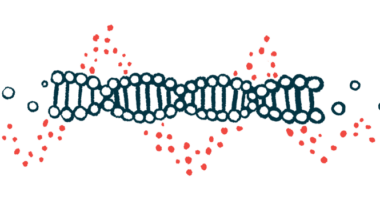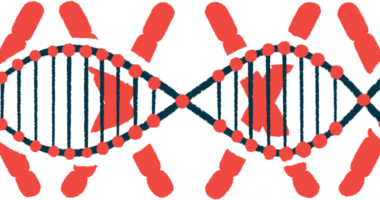SMA gene therapy GC101 found safe, effective in animals
Treatment found helpful in SMA mice, safe in non-human primates

Gene therapy GC101 was found to rescue disease manifestations in a mouse model of spinal muscular atrophy (SMA) type 3 and to be safe in non-human primates, supporting its move into clinical testing.
Genecradle Therapeutics is sponsoring ongoing Phase 1/2 clinical trials in SMA type 1 (NCT05824169), SMA type 2 (NCT05901987), and SMA type 3 (NCT06421831). Each clinical trial is testing how safe a single dose of GC101 is and how well it works when delivered via intrathecal injection into the spinal canal.
“The study provides critical data supporting [the treatment’s] advancement to clinical trials,” researchers wrote in the study, “Preclinical evaluation of AAV9-coSMN1 gene therapy for spinal muscular atrophy: efficacy and safety in mouse models and non-human primates,” which was published in Molecular Medicine.
SMA is caused chiefly by mutations in the SMN1 gene, which provides instructions for producing a protein called SMN. This protein is essential for the proper functioning of motor neurons, the nerve cells that control voluntary movement. Mutations in SMN1 lead to a gradual loss of motor neurons, which results in SMA symptoms.
The age of onset and severity of symptoms vary across the different types of SMA, and despite the disease-modifying therapies available, “there is a need for further research into gene therapies that can offer broad and sustained efficacy across all SMA types with minimal side effects,” the researchers wrote.
SMA gene therapy designed to aid motor neurons
GC101 uses a harmless adeno-associated virus serotype 9 (AAV9) to carry a healthy copy of the SMN1 gene that has been modified so that motor neurons can produce a more stable version of the SMN protein. In lab-grown cells, this increased levels of SMN by up to six times.
To test GC101, the researchers turned to a mouse model of SMA type 3. Left untreated, these mice begin to lose the tips of their tails, which become damaged and fall off within 30 days after birth. One of four doses was delivered into the cerebrospinal fluid around the brain and spinal cord through an intracerebroventricular (ICV) infusion into the brain’s fluid-filled cavities.
At doses of 5.3E13, 8E13, and 1.6E14 vector genomes per kilogram of body weight (vg/kg), GC101 helped to preserve tail length, but there was no significant difference between the two higher doses, suggesting “there is an optimal dose range beyond which no further efficacy is achieved,” the researchers wrote.
Compared with untreated mice, those treated with a single dose of 5.3E13 vg/kg in their first day of life — “which is critical for SMA given the rapid progression of motor neuron loss,” the researchers noted — showed reduced damage to muscles and restored function of mitochondria, the cellular structures responsible for producing energy.
To understand how GC101 spread in the body, the researchers tested both the ICV infusion (in mice) and the intrathecal route of administration (in cynomolgus monkeys). Both showed good distribution throughout the brain and spinal cord, without any signs of inflammation.
“These findings provide critical data supporting the clinical application of [GC101] and highlight its potential as a safe and effective treatment for SMA,” the researchers concluded, noting that gene therapies for the disease have been associated with side effects such as liver damage.








